Smitten
It all started when I was thirteen years old. I was a perfectly happy kid, mindlessly plowing my way through this life, when it arrived in the mail. Suddenly, my own little world seemed too little, and didn’t fit me the way it did just moments before. In a flash, everything and everyone had changed. Yep, I held a National Geographic magazine in my hands…and the whole world was my kin.
Not just people…rivers, mountains, deserts, oceans, jungles…elephants, ocelots, kangaroos, kinkajous…redwoods, oaks, cedars, gums, baobabs…eagles, albatrosses, penguins, ibises, kiwis…and it goes on forever. The weirder it got…ayes ayes, platypuses, gharials, tardigrades…the more I liked it. I didn’t know it at the time, but I had just fallen madly in love with Mother Earth.
Forty-three years later, I’m still smitten. (And, honestly, I can’t believe the rest of the world isn’t swooning as well.) This planet, this bounty of beauty, this feast of the fantastic, this smorgasbord for the senses that has been simmering away for a few billion years to arrive at this amazing crescendo of coexisting communities. We didn’t even have to cook it!
I’m hungry…let’s go feast on the back forty!
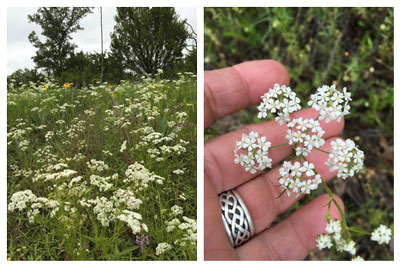
Prairie Bishop (Bifora americana) is a lovely little member of the Carrot/Parsley Family (Apiaceae). Some folks confuse her for two aggressive look-alikes, White Yarrow or Queen Anne’s Lace, but this eighteen-inch beauty colonizes loosely, which allows her to coexist with many other species.
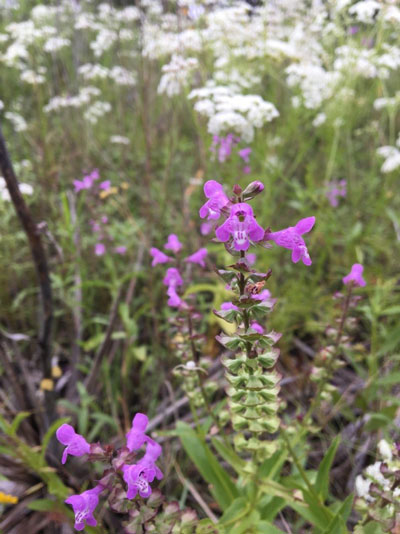
I found a few Prairie Brazoria (Warnockia scutellarioides) scattered in a remote corner of the prairie that I almost always bypass, due to a particularly pernicious patch of poison ivy.
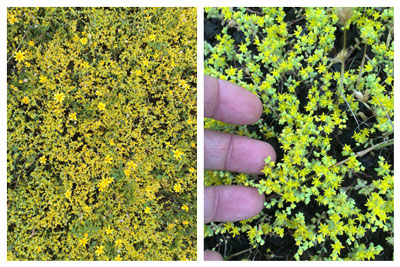
Yellow Stonecrop (Sedum nuttallianum) blankets the ground. The intricate, golden-yellow flowers sit atop thin stems and tiny, plump, succulent leaves.
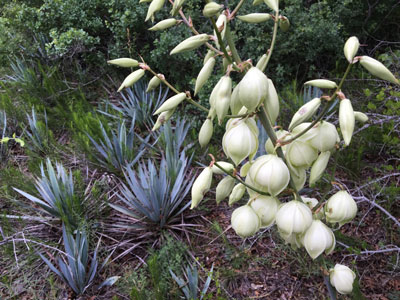
Pendant, ivory-colored blossoms rise over the pale blue foliage of Pallid Yucca (Yucca pallida).
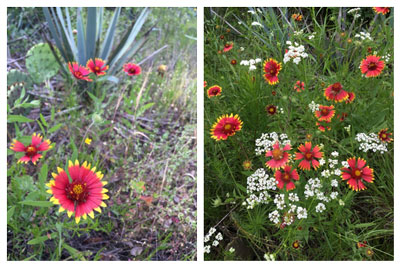
The State Flower of Oklahoma, Indian Blanket (Gaillardia pulchella) is an annual wildflower that brightens up any part of the prairie.
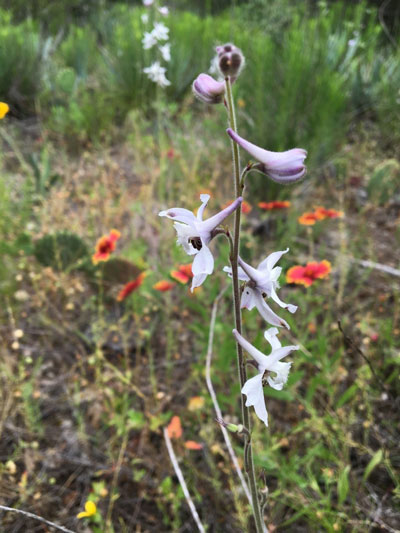
This delicate, white form of Prairie Larkspur (Delphinium carolinianum) is actually a tough perennial that adds a touch of sophisticated elegance to the prairie.
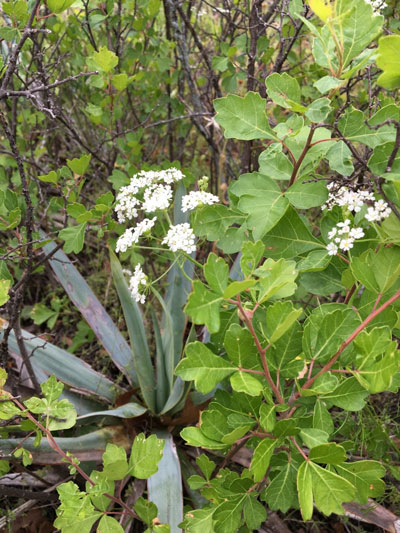
No, that’s not poison ivy. While Fragrant Sumac (Rhus trilobata) is related to the trifoliate terror, it is people friendly. This loose-textured, deciduous shrub has dark green, shiny leaves that color up to brilliant red in the fall.
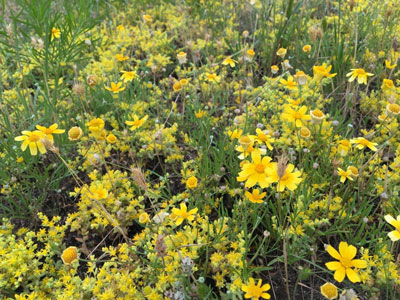
Perched atop thin, wiry stems, these Four Nerve Daisies (Tetraneuris scaposa) growing harmoniously with Yellow Stonecrop.
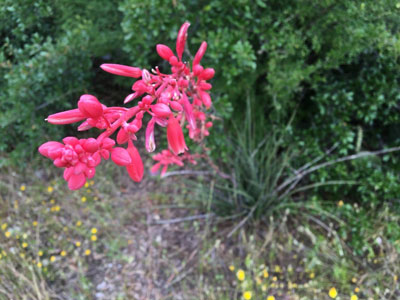
Perhaps sprouted from a discarded seed from the nearby compost pile, this Red Yucca (Hesperaloe parviflora) makes itself right at home where the shrub line meets open prairie. Common in North Texas gardens, the four to six foot-tall inflorescence of tubular flowers attracts hummingbirds and butterflies.
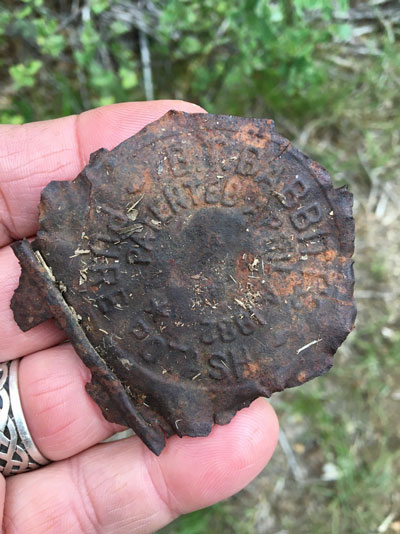
This old can lid, inscribed, “B.T. BABBIT’S PURE POTASH ◊ PATENTED APRIL 4, 1882,” was probably discarded back in the 1940s or 1950s.
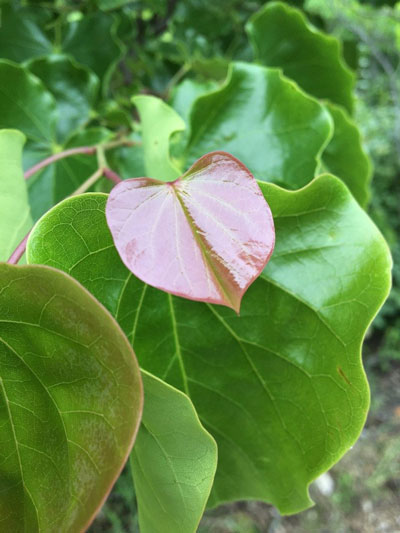
As I am nearing the end of my back-forty stroll, a tiny, new leaf of Texas Redbud (Cercis texensis) catches my eye…and my sentiments.
Fifty years ago, while growing up in a small town full of open fields and small ponds, I loved the outside…trees and tall grasses and birds and critters and all. I just didn’t know how much outside there was until that first National Geographic hit the mailbox. And while I’ve traveled a bit and seen a lot of things, I take some kind of strange comfort in knowing that the world is bigger than a person can see in a lifetime. Planes, trains, pack mules, whatever…no one ever gets to see it all.
Few people have seen my back forty, and I consider it a privilege to share it with you. Who knows…maybe this little ditty will find its way to some other 13 year-old and spark another lifelong love affair with Mother Earth. One more soul smitten…
Peace & love,
Steven
PS—A lagniappe for you…
Caught this American Anole showing off a bit, in hopes of landing a mate. Anoles are common in and beneficial to Texas gardens…I consider them my personal friends.

American Anole
____________________________________________________________________
I need a road trip! I’d love to come out and speak to your group. I’m low maintenance, flexible, and I’ll go just about anywhere…no city too big; no town too small. Just e-mail me at stevenchamblee@yahoo.com and we’ll work something out.
Come see me at Chandor Gardens! Call 817-613-1700 or go to www.chandorgardens.com for details.
